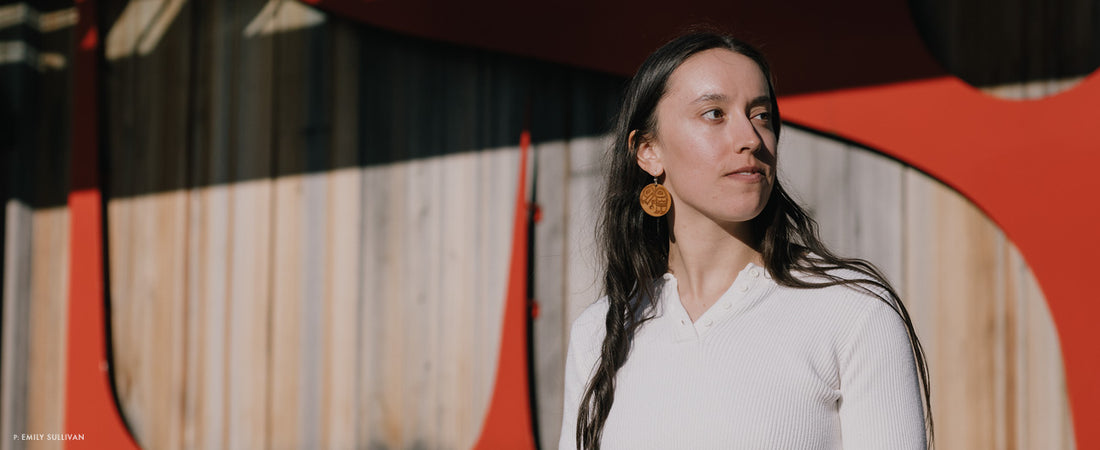Ellen Bradley’s Currents of Change

A soft glow illuminates Auke Bay as the evening sun, warm and golden, slips lower in the sky. It's one of the first sunny days of spring, and Áak'w Ḵwáan (Juneau, AK) is abuzz with energy. But the bay remains frigid and quiet, a reminder of the winter that's rapidly melting—both from the town's collective memory as well as the nearby mountains.
Ellen Bradley greets the salt water slowly, wading step by step into it. A few quiet minutes pass as she takes in the rainforest, the mountains, the horizon. Without fanfare she slips entirely beneath the sparkling surface, engulfed by cold. For Ellen, this is coming home.
A skier since she was four, Ellen grew up just north of Seattle in Mill Creek, WA, away from her family’s traditional homelands in Southeast Alaska. She is Lingít and a child of the Dog Salmon clan, the L’eeneidí. Her youth was spent largely outdoors, playing team sports like soccer and skiing with her family at Stevens Pass on the weekends. She nurtured her identity as a skier throughout college, structuring her course load to allow for weekday skiing. Now a professional athlete, the 26-year-old resides in Winter Park, CO—where she is an alpine ambassador for the resort—and spends much of her free time developing her backcountry skillset. Though based in the Lower 48, she has recently sought to strengthen her relationship with Lingít Aaní (Lingít land) through ski trips to Juneau.
Subscribe for access to this article plus the entire archive of The Ski Journal content—and receive a discount on all products. Subscribe Now
